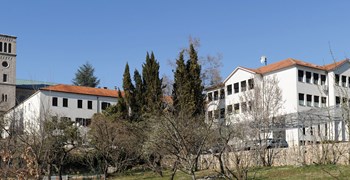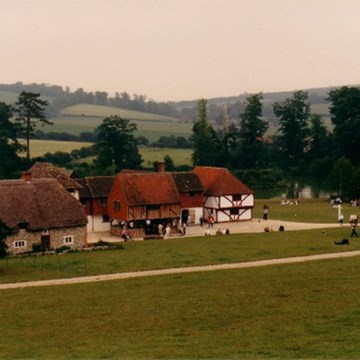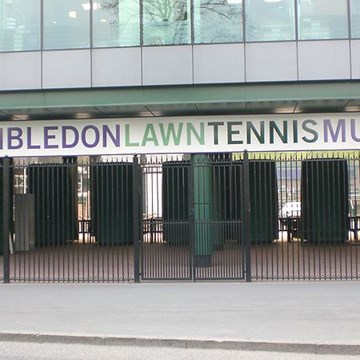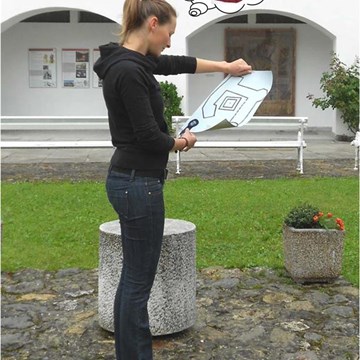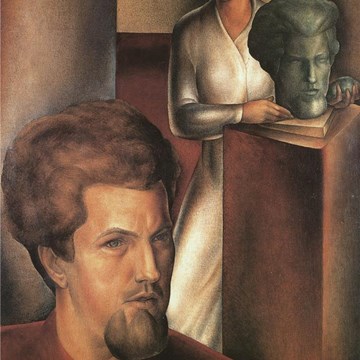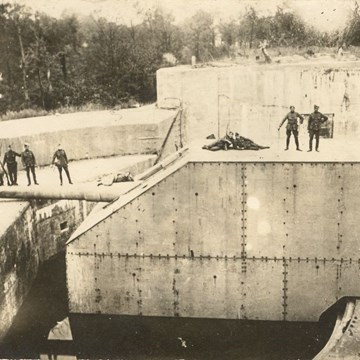International Museum Day 2022: The Power of Museums / Art and Ecology
Art and Ecology
How strong is the connection between ecology and art? Two concepts so different, one new and at its peak, the other present since the human’s first appearance. The notion of ecology appears only in the 19th century, but if went back to the very beginnings of human existence it would immediately be clear that ecology and art are two ideas that have been completely intertwined. In the prehistory, man lived in complete harmony with the nature, in self-sustaining areas. With the development of different civilisations and religions, man slowly put himself in the centre of the ecosystem, but as a ruler, not as a guardian. With great scientific discoveries, Western civilization was gripped by a greedy consciousness, gaining the illusion that they can tame nature through science, and looking at everything through economic calculations. However, man has always, to a greater or lesser extent, tried to return to nature. All the time throughout the history there have been individuals, almost always related to arts, literature, philosophy, who have subtly and directly warned about possible consequences of that rapid industrial growth. Many romantics, poets and artists, reflected their inner states through nature. It is the period of depicting landscapes, which served as an escape from the harsh reality. The end of the 19th century also brought the last architectural styles that celebrate the connection between artistic design and natural forms. Modernism came after that, which puts emphasis on clean surfaces and industrial style; modernists no longer think about nature. Today we are in a new age, the late Anthropocene, the age of information and ecology. The main question becomes how to construct housing that will be in harmony with the nature. There is more and more discussion today about self-sustainability, but without art the whole idea of sustainability is falling apart. In order for people to agree to such architecture, it must be aesthetically acceptable, and it is art that takes on this role. Many believe that the link between art and political, social and economic changes is neither direct nor consequential. Although art alone cannot save the planet or the blue whale, its task is to present, criticise and imaginatively play with the problem and imagine a future that is not determined solely by material gain.
Compared to the ecological crisis we are in, all the other social, political, economic ones are becoming irrelevant. Obviously, if humanity disappears because of global warming, overpopulation, hunger, water scarcity, the fight for human rights, the cure for cancer, peace in the world, or anything else will not matter much either. From this we can conclude that all our efforts at the moment should be directed towards the preservation of our Planet. We need a new spirit, a new enthusiasm that will start a new era, a new artistic period that will actively work on saving the planet. The best place to start is education and school. That is why this project as a part of the Museum Night is of great importance, not only in educating students and their further guidance, but also in raising awareness of the general public. With their work, the students of the Gabrijel Jurkić High School of Fine Arts send the message that all activities must be environmentally aware. They are warning us of the problems that surround us. In creating their work of art, an installation made exclusively out of waste, non-degradable materials, they put the emphasis on overloading the planet with plastic and waste. From such material they create organic shapes, forming a forest of plastic that associates us with the natural habitats of animals and humans, which are systematically being destroyed. By playing with light, they achieve the shadows of trees that should be a reminder of all those wooded areas that have disappeared due to direct human influence, as well as due to climate change and pollution. In their joint work, which consists of their individual sculptures, they cover various environmental issues they put emphasis on, and send the message that the individual is important to the society, but that they get a stronger voice when they are in a group.
Art has always been used as a way to change our realities and truths. It has often been ahead of its time and subtly foresaw and warned of major social changes. It is becoming clear to us why ecology is becoming the subject of interest of a growing number of artists. We always say that the future of the world is in the hands of young people who have the task of thinking about how to make the future socially and environmentally responsible. Our minds are still programmed to think about the future as some high-tech futuristic space. We urgently need to question our priorities and rethink what kind of future we really want.
Ana Mikulić
Exhibitions and events
We don't have anything to show you here.
Activities from this museum
We don't have anything to show you here.
